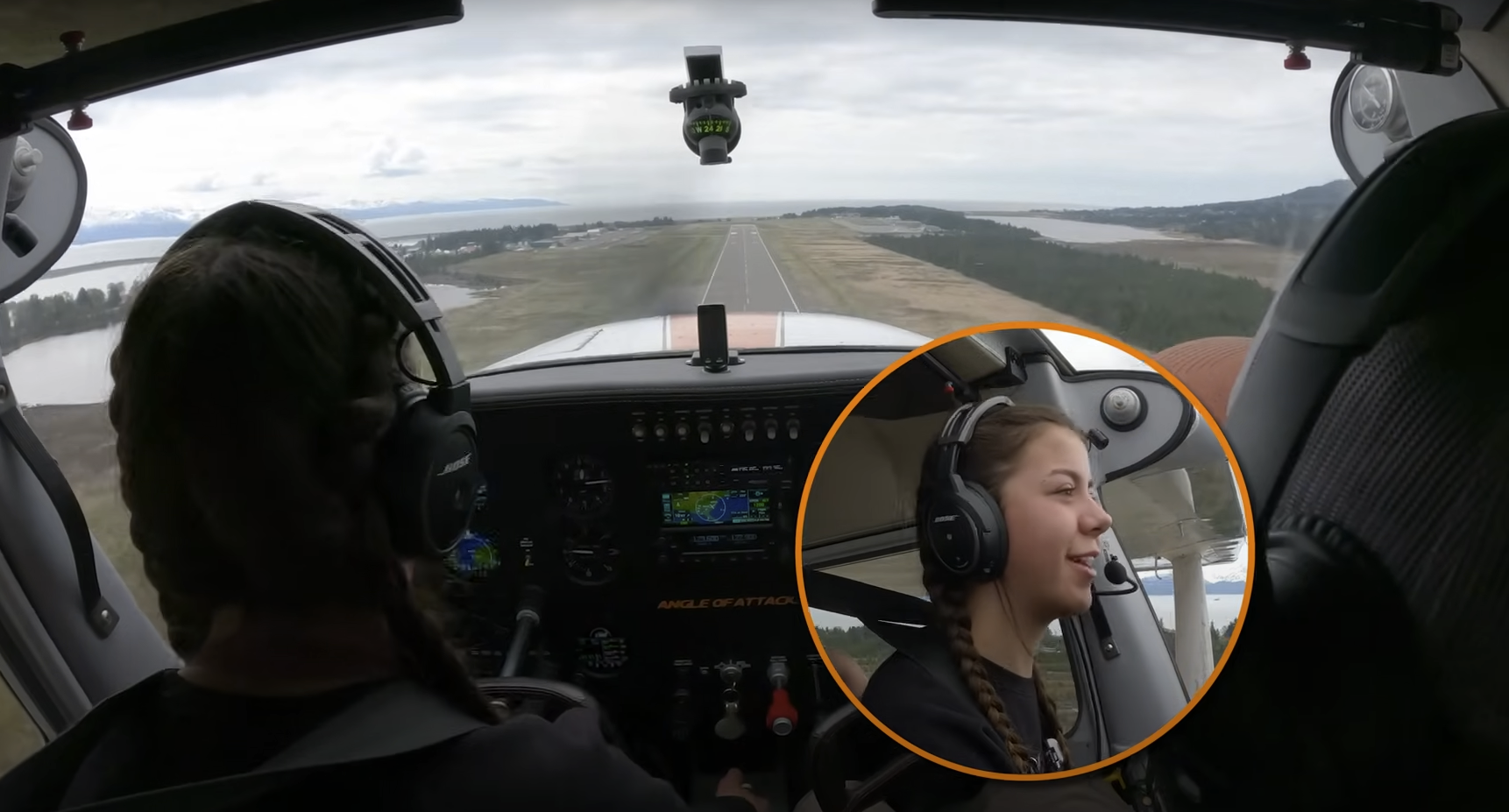
The short field landing is executed differently in two ways, sometimes three. Let’s talk about the two ways it is different.
First, we approach at a slightly slower airspeed. Usually, we’d fly at 1.3 Vso on the approach, but here we’ll fly at 1.2 Vso. That means 3-5 knots slower, typically, for smaller aircraft. This matters because we have less energy going into the landing, meaning a faster transition to touchdown and less speed to dissipate with braking.
Second, touchdown and braking. For the ACS (airmen certification standards) you have 0 + 200 feet to hit your landing mark. That means right on the line and forward 200 feet. No less, no more.
The white touchdown stripes on larger runways are 150 feet long. Imagine another third of that, and you’ve got your target. Putting it in the white guarantees you made it. Any more than that, and you’re right on the edge.
While it’s possible to touch down softly here, that’s not the main goal. While we won’t break the airplane, we’re going to allow it to come down firmly if needed so we can get to braking. Don’t slam it on, but don’t try and hold it off forever and eat up too much distance. Besides, you’ll be approaching at a slower speed and this thing isn’t going to want to float much. Distance matters a LOT in this case. Duh, it’s a short field!
Now we do max braking. In the case of flight training, we do ‘simulated’ max braking. That means we don’t do the kind of braking as if it were all on the line. Why? To save the school from buying new brakes and tires every few flights.
Aerodynamic braking is perhaps the best method to brake. It means as soon as you’ve touched down and you have brake pressure, apply back pressure on the yoke, so the elevator is deflected upward. This causes a lot of extra drag. Time it correctly with brake application so as to not lift off the runway. You should be slow enough already so that won’t be much of an issue.
Third, which we didn’t mention before, was the potential need to land OVER a 50-foot obstacle. That means you can either slip into the runway or plan a steeper approach.
If you land on your target, and stop well, you’ve accomplished a solid short field landing!
Chief Flight Instructor and President of Angle of Attack. Founded in 2006.

Stay Connected
Be the very first to get notified when we publish new flying videos, free lessons, and special offers on our courses.





